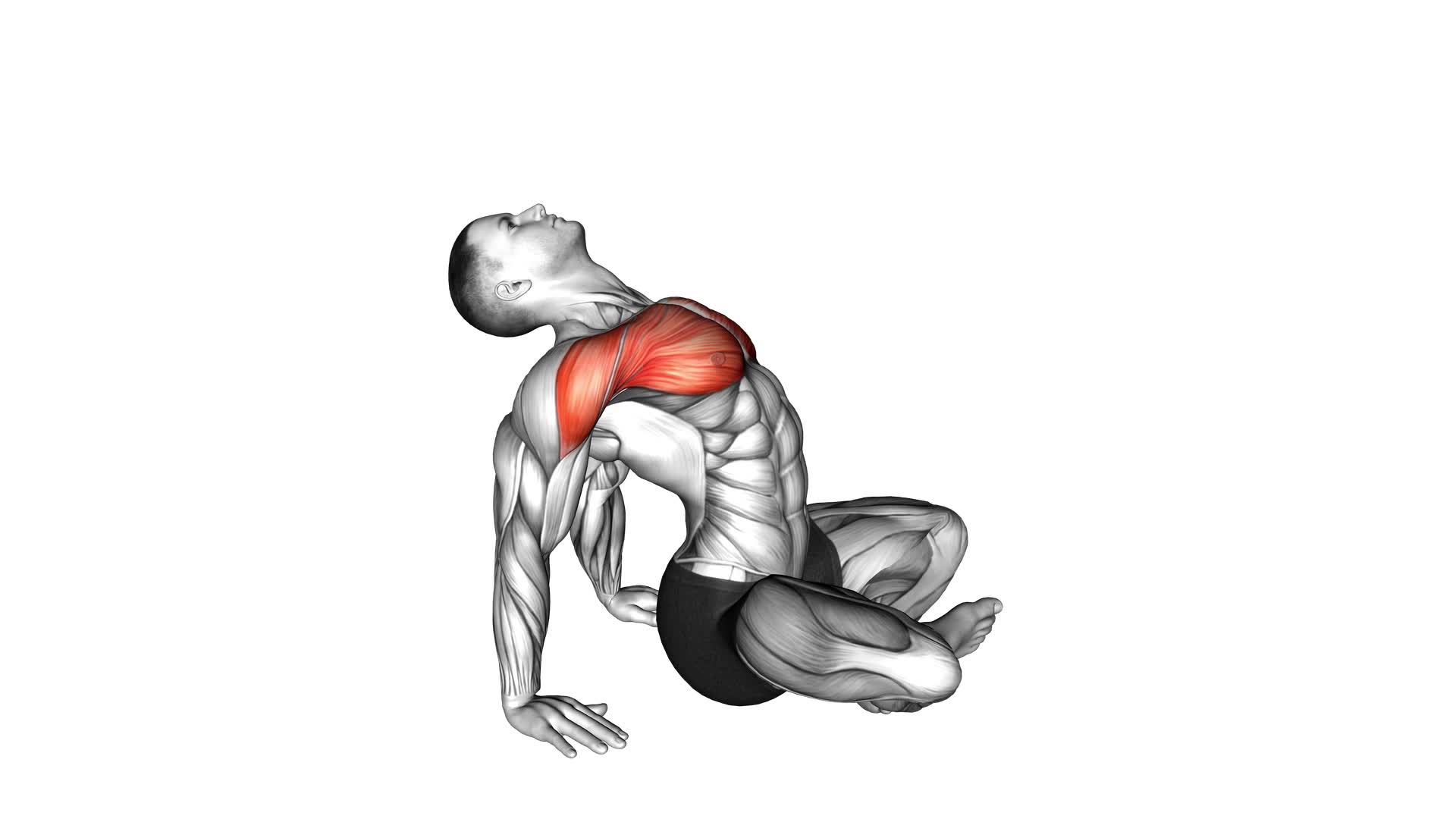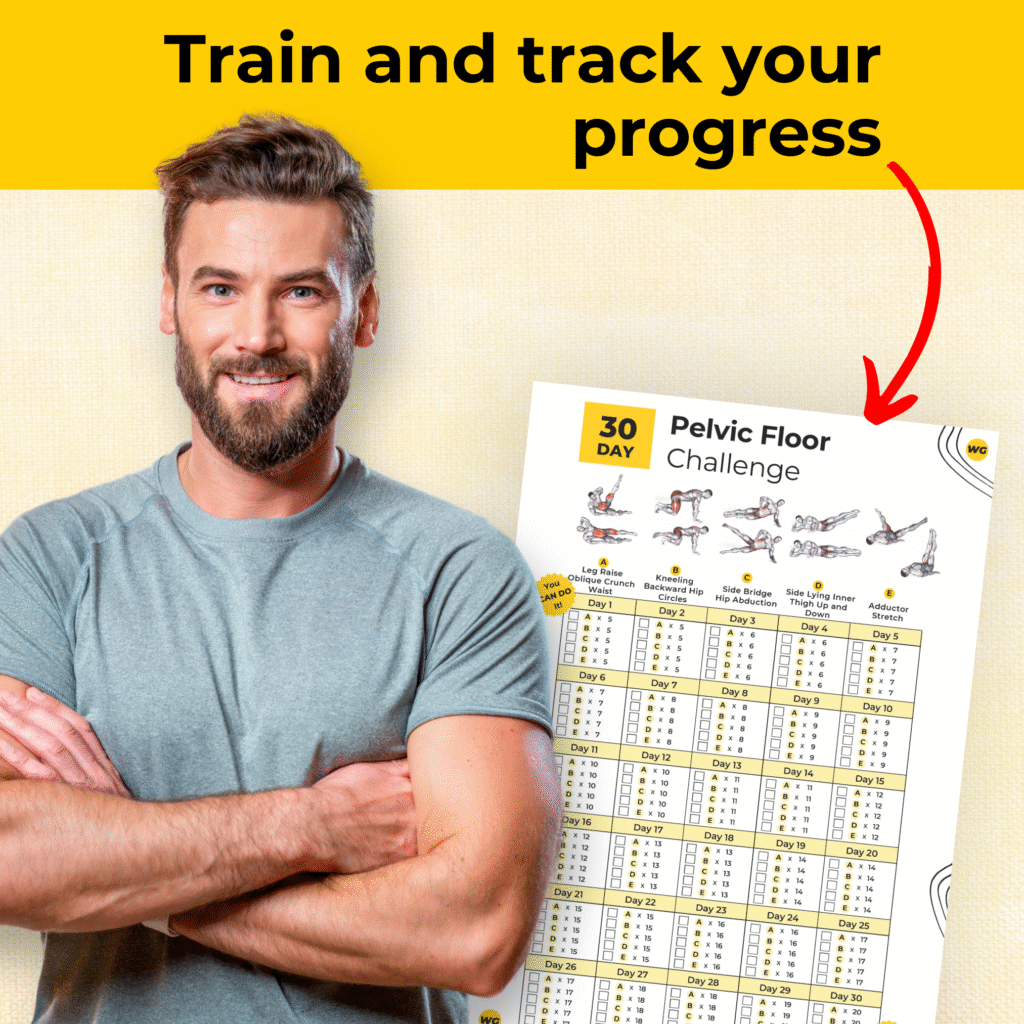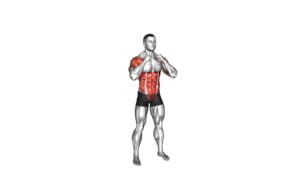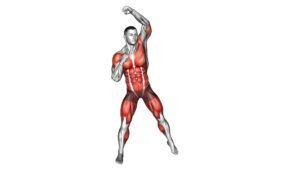Seated Sky Look (male) – Video Exercise Guide & Tips

In this video exercise guide, you'll learn all about the Seated Sky Look. This exercise offers numerous benefits for your fitness journey.
Watch This Exercise Video
You'll discover the proper form and technique, as well as variations for different fitness levels. Get ready to maximize your results with helpful tips and precautions.
Safety guidelines are also provided to ensure a safe and effective workout. Let's dive into the Seated Sky Look and take your fitness to new heights!
Key Takeaways
- The Seated Sky Look exercise improves posture and strengthens core muscles.
- Proper form and technique include sitting up tall with a straight back, engaging core muscles, and slowly rotating the upper body.
- Common mistakes to avoid include rounding the back, using momentum, and straining the neck.
- Variations for all fitness levels are available, and tips for maximizing the exercise include using a sturdy chair, maintaining good posture, and focusing on slow and controlled movements.
Benefits of the Seated Sky Look
Discover the benefits that the Seated Sky Look can offer you. This exercise is specifically designed to improve your posture and strengthen your core. By incorporating the Seated Sky Look into your fitness routine, you can experience significant improvements in your overall body alignment and stability.
One of the key benefits of the Seated Sky Look is improved posture. As you perform this exercise, you'll engage your core muscles, which play a vital role in maintaining proper alignment of your spine. Strong core muscles help to support your back and promote good posture, reducing the risk of developing conditions such as lower back pain or rounded shoulders.
Additionally, the Seated Sky Look targets and strengthens your core muscles. As you extend your arms and reach towards the sky while sitting, you engage your abdominal and back muscles. This exercise requires you to maintain stability and control, which helps to build strength in your core.
Incorporating the Seated Sky Look into your regular exercise routine can have a positive impact on your overall physical well-being. By improving your posture and strengthening your core, you can enhance your body's stability and decrease your risk of developing posture-related issues. Start reaping the benefits of this exercise today!
Proper Form and Technique
To perform the Seated Sky Look exercise correctly, you need to focus on maintaining proper form and technique. Here are some key points to keep in mind to ensure you get the most out of this exercise:
- Sit up tall with your back straight and shoulders relaxed.
- Place your feet flat on the ground, hip-width apart.
- Engage your core muscles by pulling your belly button in towards your spine.
- Slowly rotate your upper body to the right, keeping your hips and lower body stable.
- As you rotate, allow your head to follow the movement, looking over your right shoulder.
Now, let's address some common mistakes and misconceptions that people often have when performing the Seated Sky Look exercise.
One common mistake is rounding the back or slouching while rotating. Remember to keep your back straight and maintain good posture throughout the exercise.
Another misconception is that you need to rotate as far as possible. It's important to listen to your body and only rotate as far as you feel comfortable without straining.
Lastly, avoid using momentum to rotate. This exercise should be done in a controlled manner, focusing on engaging your core and using your abdominal muscles to initiate the movement.
Variations for All Fitness Levels
For all fitness levels, there are various modifications available for the Seated Sky Look exercise.
If you're a beginner, you can start by performing the exercise without any weights. Simply sit on the edge of a chair with your feet flat on the ground and your back straight. Slowly raise your arms overhead, keeping them straight and in line with your ears. Look up towards the ceiling while maintaining a neutral spine. This modified version will help you build strength and flexibility in your upper body.
For those at an advanced level, you can challenge yourself by adding weights to the exercise. Hold a dumbbell or a weighted plate in each hand as you perform the Seated Sky Look. This will increase the resistance and intensify the workout, targeting your shoulders, upper back, and core muscles even more.
By incorporating these beginner modifications and advanced adaptations, you can tailor the Seated Sky Look exercise to your fitness level. This allows you to progress gradually and keep challenging yourself as you become stronger and more comfortable with the movement.
Now that you have learned about the variations for all fitness levels, let's move on to the next section to discover some tips for maximizing the exercise.
Tips for Maximizing the Exercise
To get the most out of the Seated Sky Look exercise, focus on proper form and engage your core throughout the movement. Here are some tips to help you maximize the benefits of this exercise:
- Use a sturdy chair or bench: Make sure the equipment you're using is stable and can support your weight. This will ensure your safety and allow you to focus on the exercise without any distractions.
- Maintain a tall posture: Sit up straight with your shoulders back and your chest lifted. This will help you engage your core muscles and maintain proper alignment throughout the exercise.
- Avoid leaning back: Keep your torso upright and avoid leaning back as you perform the sky look movement. This will help you target your core muscles more effectively and prevent strain on your lower back.
- Focus on controlled movements: Rather than rushing through the exercise, focus on slow and controlled movements. This will enable you to fully engage your core muscles and maximize the effectiveness of the exercise.
- Breathe properly: Remember to breathe deeply and exhale as you twist your torso. This will help you maintain proper form and generate more power during the movement.
Precautions and Safety Guidelines
Ensure your safety and prevent injuries by following these precautions and safety guidelines when performing the Seated Sky Look exercise. It's important to be aware of common mistakes and have the necessary equipment to ensure a safe and effective workout.
First and foremost, always consult with a healthcare professional before starting any new exercise routine, especially if you have any pre-existing medical conditions or injuries. This will help you determine if the Seated Sky Look exercise is suitable for you.
When performing the exercise, make sure you have a sturdy chair or bench to sit on. It should be stable and able to support your weight. Avoid using chairs with wheels or that are prone to tipping over.
Maintain proper form throughout the exercise to prevent strain or injury. Keep your back straight and shoulders relaxed. Avoid any jerky movements or excessive twisting of the neck or spine.
Common mistakes to avoid include using momentum to swing your upper body instead of engaging your core muscles, and straining your neck by looking up too far or too quickly.
Lastly, listen to your body and stop the exercise if you experience any pain or discomfort. Remember to start slowly and gradually increase the intensity and duration of the exercise over time.
Frequently Asked Questions
How Long Should I Hold the Seated Sky Look Position?
To improve flexibility and reap the benefits of seated exercises, it's important to hold the seated sky look position for an adequate amount of time. Without considering the specific exercise, the duration of the hold may vary.
However, it's generally recommended to hold each position for at least 20 to 30 seconds. This allows your muscles to stretch and lengthen, increasing your overall flexibility and range of motion.
Can the Seated Sky Look Exercise Help Improve Posture?
The seated sky look exercise can definitely help improve your posture. By engaging the muscles in your back and neck, this exercise promotes proper alignment and strengthens the spine.
It also stretches the chest and shoulders, reducing the effects of slouching. To get the most out of this exercise, remember to sit up straight, lengthen your neck, and hold the position for a few seconds.
Incorporating the seated sky look into your routine will lead to better posture and overall spinal health.
Is It Necessary to Warm up Before Performing the Seated Sky Look Exercise?
Before performing the seated sky look exercise, it's necessary to warm up.
Warming up helps prepare your muscles and joints for the movement, reducing the risk of injury. Additionally, warming up increases blood flow and oxygen delivery to the muscles, enhancing their performance during the exercise.
It also helps to improve flexibility and range of motion. So, don't skip the warm-up as it brings numerous benefits and allows for variations in the seated sky look exercise.
Can the Seated Sky Look Exercise Be Modified for Individuals With Limited Mobility?
Yes, the seated sky look exercise can be modified for individuals with limited mobility. Modified variations of this exercise can include reducing the range of motion or using a chair with armrests for added support.
These modifications allow individuals with limited mobility to still benefit from the exercise.
The seated sky look exercise is particularly beneficial for elderly individuals as it helps improve flexibility, posture, and neck mobility.
How Often Should I Include the Seated Sky Look Exercise in My Fitness Routine?
To get the most out of your fitness routine, it's important to know how often to include the seated sky look exercise.
This exercise can help improve your mobility and flexibility. Start by doing it a few times a week and gradually increase the frequency as you get more comfortable.
Conclusion
In conclusion, the seated sky look exercise is a beneficial workout that can be performed by individuals of all fitness levels.
By following proper form and technique, you can maximize the benefits of this exercise. Remember to always prioritize safety and listen to your body's limits.
With regular practice, the seated sky look can help improve flexibility and strengthen your core muscles.
So, incorporate this exercise into your routine and enjoy the results it brings.

Author
Years ago, the spark of my life’s passion ignited in my mind the moment I stepped into the local gym for the first time. The inaugural bead of perspiration, the initial endeavor, the very first surge of endorphins, and a sense of pride that washed over me post-workout marked the beginning of my deep-seated interest in strength sports, fitness, and sports nutrition. This very curiosity blossomed rapidly into a profound fascination, propelling me to earn a Master’s degree in Physical Education from the Academy of Physical Education in Krakow, followed by a Sports Manager diploma from the Jagiellonian University. My journey of growth led me to gain more specialized qualifications, such as being a certified personal trainer with a focus on sports dietetics, a lifeguard, and an instructor for wellness and corrective gymnastics. Theoretical knowledge paired seamlessly with practical experience, reinforcing my belief that the transformation of individuals under my guidance was also a reflection of my personal growth. This belief holds true even today. Each day, I strive to push the boundaries and explore new realms. These realms gently elevate me to greater heights. The unique combination of passion for my field and the continuous quest for growth fuels my drive to break new ground.







